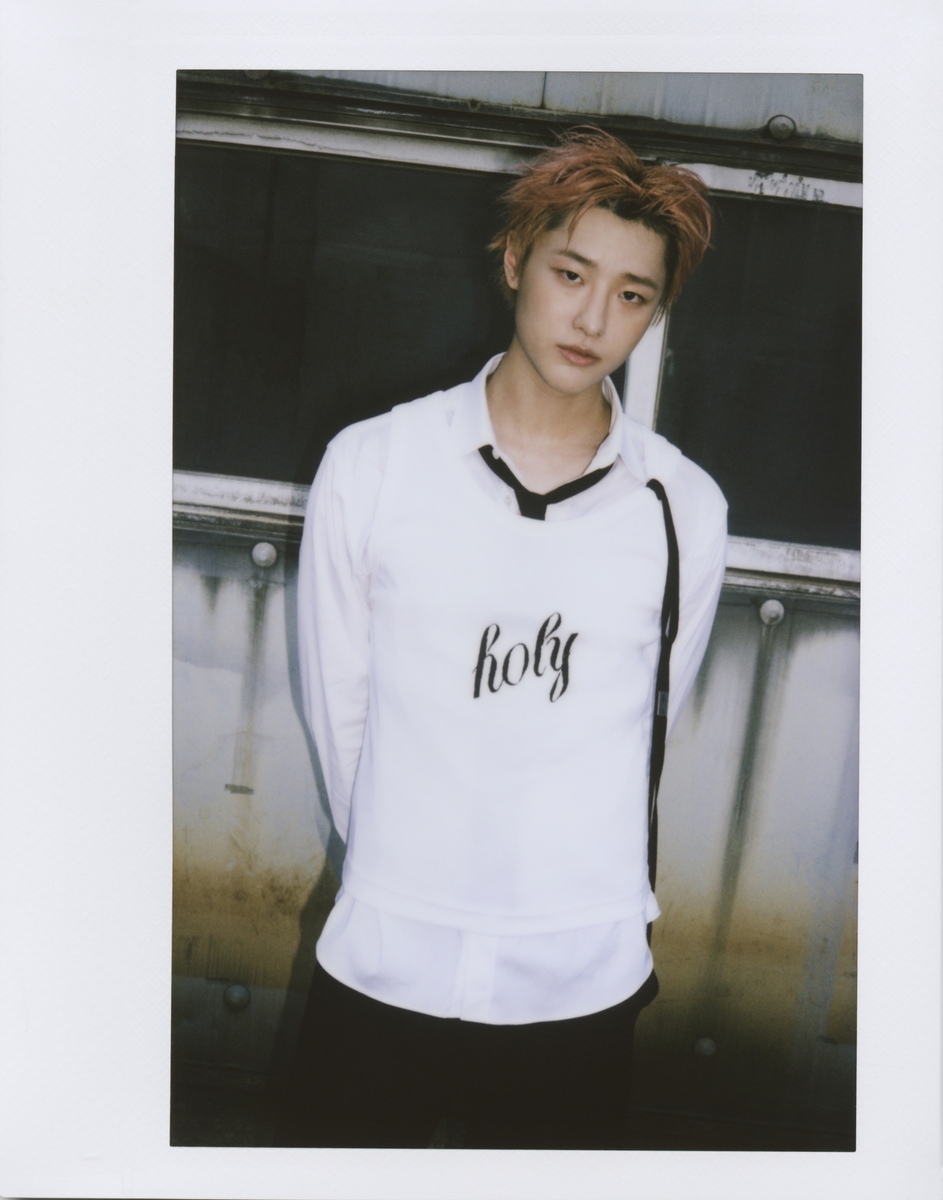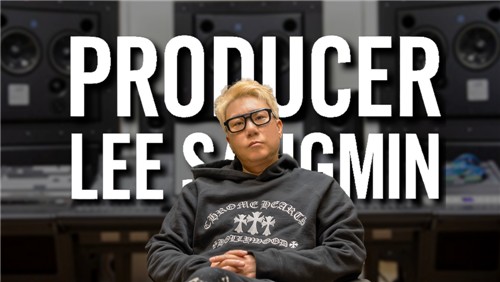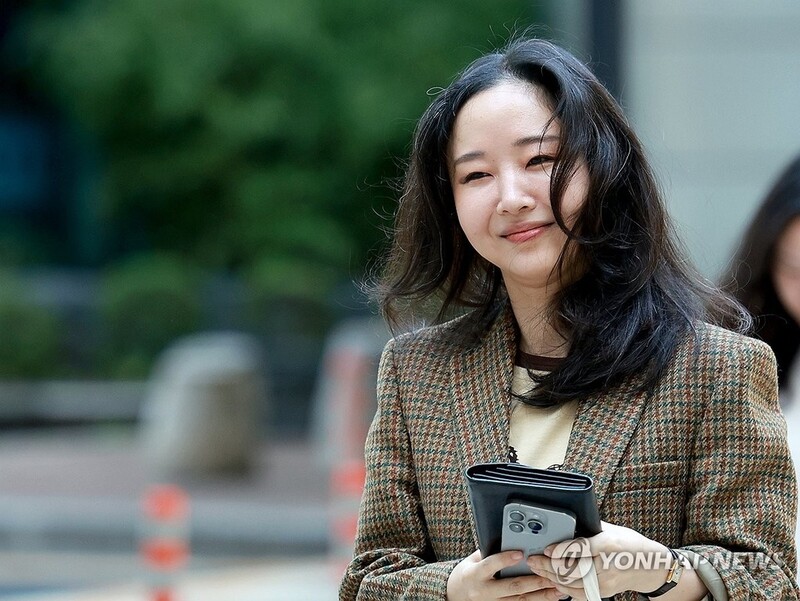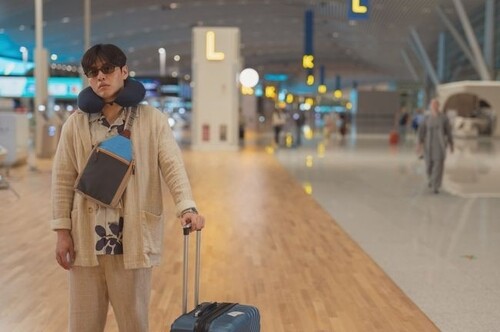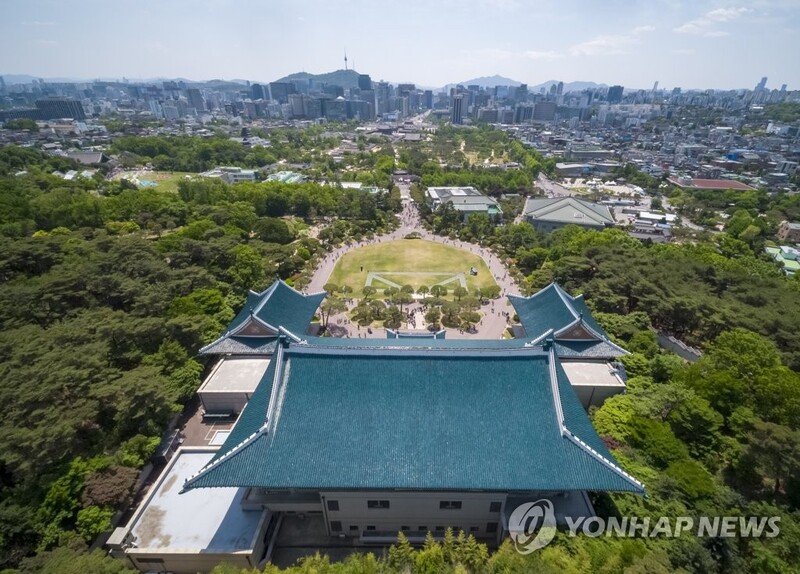 |
| ▲ This photo, shows the view of Seoul along with the main building of Cheong Wa Dae. (Yonhap) |
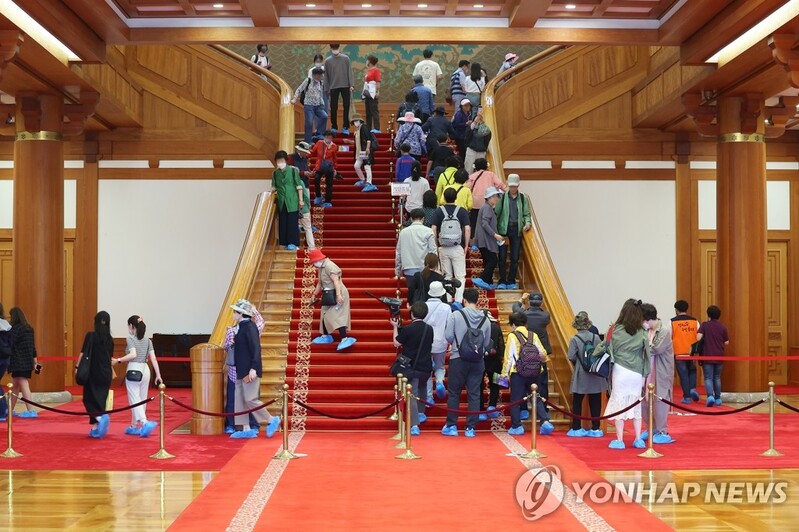 |
| ▲ This photo, shows visitors looking around the main building of Cheong Wa Dae. (Yonhap) |
SEOUL, June 14 (Yonhap) -- Cheong Wa Dae, a backyard of the Gyeongbokgung Palace during the Joseon Dynasty, and a political space used by the most powerful people of the country in the modern times, should not be used as a place for simple entertainment like Changgyeongwon, an entertainment facility built during the Japanese colonial period, pointed out the architecture industry.
Choi Jong-deok, the former director of the National Research Institute of Cultural Heritage, announced that the Architectural Institute of Korea has brought out the subject of Changgyeongwon which destroyed the identity of the palace by saying "We need to make sure that the area around Cheong Wa Dae should not be in such use that destroys the character of Cheong Wa Dae," prior to the symposium of "After the opening of Cheong Wa Dae; From being a backyard of Gyeongbokgung to becoming Cheong Wa Dae" on the 13th.
The symposium will be held at the Architecture Center of the Architectural Institute of Korea in Bangbae-dong, Seocho-gu, Seoul on the 16th.
"Cheong Wa Dae must be reborn as a place where one can meet the history and culture all the way from the Joseon Dynasty till the Republic of Korea," said former Director Choi, as he argues that Cheong Wa Dae should be designated as a national cultural heritage site to protect it from hasty decisions.
He then advised an investigation on Cheong Wa Dae, where even experts were not allowed to enter back then, to be thoroughly conducted so that a conservation and utilization plan could be established based on the results.
He also pointed out that that there is a need for measures to solve the so-called "overtourism" that is occurring in the surrounding areas of Cheong Wa Dae with so many people visiting Cheong Wa Dae.
Professor Kim Jong-heon of Pai Chai University also introduced the case of Changgyeongwon and expressed concern that Cheong Wa Dae, which was opened without any proper investigation with the inauguration of the Yun Seok-yeol government, should not be a place for relaxation and entertainment.
"When utilizing a cultural heritage, it is important to maintain the original function," said Professor Kim. "Cheong Wa Dae, which was built in the backyard of the Gyeongbokgung Palace and which was used as a presidential office, is a place filled with the history of Korea from Emperor Gojong of Korea till former president, Moon Jae-in. Thus, it would be great to show how a leader's decision can affect people's lives."
Referring to "Mount Vernon," the historic home of America's first president, George Washington, he suggested that the residence of the president be kept as it is, while the main building and the Yeo-min gwan (office building where the President's senior secretaries work) should be used as exhibition spaces.
Kim Seong-do, Director of Safety and Disaster Prevention Division at the National Research Institute of Cultural Heritage, Cultural Heritage Administration of Korea, who published a thesis estimating the size of the Gyeongbokgung Palace backyard area, argued that the historicity and legitimacy of Cheong Wa Dae should be restored in connection with the Gyeongbokgung Palace, which is undergoing restoration work.
Director Kim, said, "For at least two years, the heritage from the Joseon Dynasty till the present day should be thoroughly investigated." He added that some buildings from the Joseon Dynasty should be restored and while valuable modern buildings should be inscribed as registered cultural properties.
Yi Hye-won, director of eum Architects, will be presenting the scope and historical context of Gyeongbokgung Palace's backyard, and Professor Lee Kang-geun of University of Seoul will examine the function of administration for the Gyeongbokgung backyard based on the records of access to Sinmumun, the northern gate of Gyeongbokgung.
Lee Hyun-kyung, a research professor at Hankuk University of Foreign Studies, seeks ways to use the Cheong Wa Dae in a sustainable way through overseas cases. She said that one should not forget that Cheong Wa Dae is a public heritage, and so should consider limiting the number of people while also setting up a specific path for tourists.
(This article is translated from Korean to English by Haemin Kim.)
(END)
(C) Yonhap News Agency. All Rights Reserved













![[가요소식] 보이넥스트도어, 신보로 3연속 밀리언셀러 달성](https://korean-vibe.com/news/data/20251025/yna1065624915905018_166_thum.jpg)
